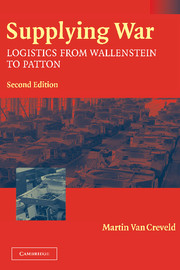Book contents
- Frontmatter
- Dedication
- Contents
- Maps
- Preface
- Introduction
- 1 The background of two centuries
- 2 'An army marches on its stomach!'
- 3 When demigods rode rails
- 4 The wheel that broke
- 5 Russian roulette
- 6 Sirte to Alamein
- 7 War of the accountants
- 8 Logistics in perspective
- Postscript: Where are we now?
- Note on sources
- Bibliography
- Notes
- Index
8 - Logistics in perspective
Published online by Cambridge University Press: 22 June 2023
- Frontmatter
- Dedication
- Contents
- Maps
- Preface
- Introduction
- 1 The background of two centuries
- 2 'An army marches on its stomach!'
- 3 When demigods rode rails
- 4 The wheel that broke
- 5 Russian roulette
- 6 Sirte to Alamein
- 7 War of the accountants
- 8 Logistics in perspective
- Postscript: Where are we now?
- Note on sources
- Bibliography
- Notes
- Index
Summary
Looking back over the present study, particularly its latter chapters, it sometimes appears that the logistic aspect of war is nothing but an endless series of difficulties succeeding each other. Problems constantly appear, grow, merge, are handed forward and backward, are solved and dissolved only to reappear in a different guise. In face of this kaleidoscopic array of obstacles that a serious study of logistics brings to light, one sometimes wonders how armies managed to move at all, how campaigns were waged, and victories occasionally won.
That all warfare consists of an endless series of difficulties, things that go wrong, is a commonplace, and is precisely what Clausewitz meant when talking about the ‘friction’ of war. It is therefore surprising that the vast majority of books on military history manage to pay lip service to this concept and yet avoid making a serious study of it. Hundreds of books on strategy and tactics have been written for every one on logistics, and even the relatively few authors who have bothered to investigate this admittedly unexciting aspect of war have usually done so on the basis of a few preconceived ideas rather than on a careful examination of the evidence. This lack of regard is in spite - or perhaps because - of the fact that logistics make up as much as nine tenths of the business of war, and that the mathematical problems involved in calculating the movements and supply of armies are, to quote Napoleon, not unworthy of a Leibnitz or a Newton. As a great modern soldier has said:
The more I see of war, the more I realize how it all depends on administration and transportation.. .It takes little skill or imagination to see where you would like your army to be and when; it takes much knowledge and hard work to know where you can place your forces and whether you can maintain them there. A real knowledge of supply and movement factors must be the basis of every leader's plan; only then can he know how and when to take risks with those factors, and battles are won only by taking risks.
- Type
- Chapter
- Information
- Supplying WarLogistics from Wallenstein to Patton, pp. 231 - 238Publisher: Cambridge University PressPrint publication year: 2004



